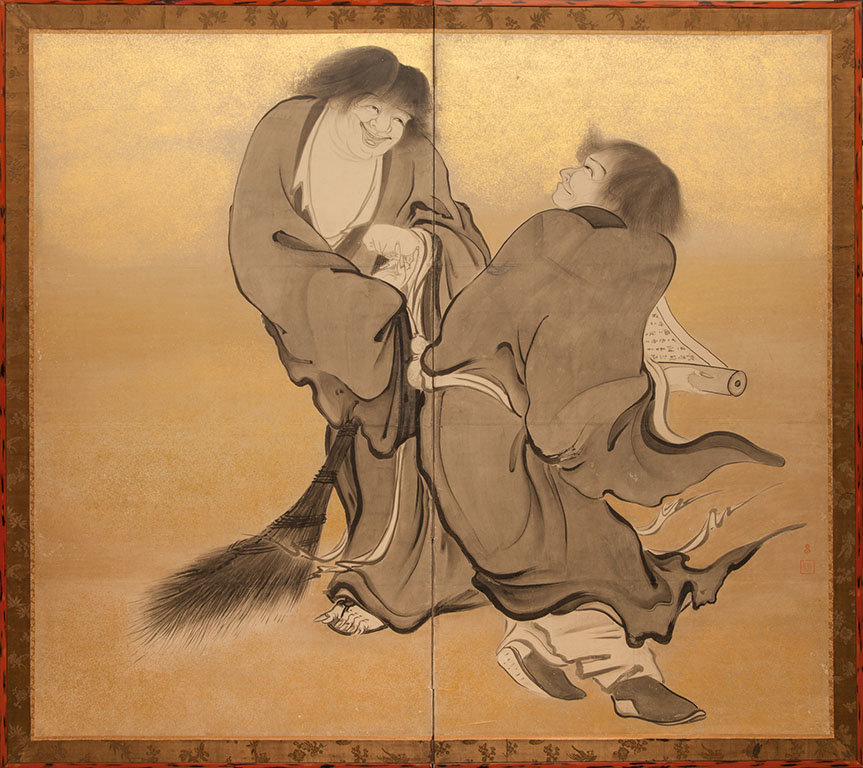KANZAN AND JITTOKU

Kanzan and Jittoku by Nakanuma Shokado (1584-1639)
Source: nagaantiques.com
Tsuba - signed "Issando Nagaharu", Sugiura Joi (H 02135.0), Edo, born 1701, died July 24, 1761. Born at the town of Kano in Mino Province. From 1639 to 1711, Mino Province was administered by the Toda Daimyo, and by the Ando Daimyo from 1711 to 1756. In 1725 Joi moved to Shinano Province where Toda Tadazane was daimyo, and became his retainer. Then he moved to Edo Shinagawa area. He was a student of Nara Toshinaga. The NAGA kanji of the art name Nagaharu, is said to have come from the NAGA kanji used by his teacher. His early work is in the style of the Nara school. Later he originated the "joi" school group, and had many students, including his younger brother and other relatives, who mostly worked in his style and could copy his work very accurately. Joi made only a few tsuba but many Fuchi-Kashira and Kozuka, mostly in shishiai-bori technique, where the design is carved below the plate surface. In his later years he became a priest, cut his hair, and took the name Joi for his nyudo name. He is buried in Tokyo at Nirenso Myozoji, where he had lived the last years of his life. His posthumous name was Myoho Kigen, as used by the Ryoshu Shinto group.
Fuchi-Kashira - signed "Ryu'an Shigenaga saku"
Menuki - Mumei Kyo-Kanagushi
